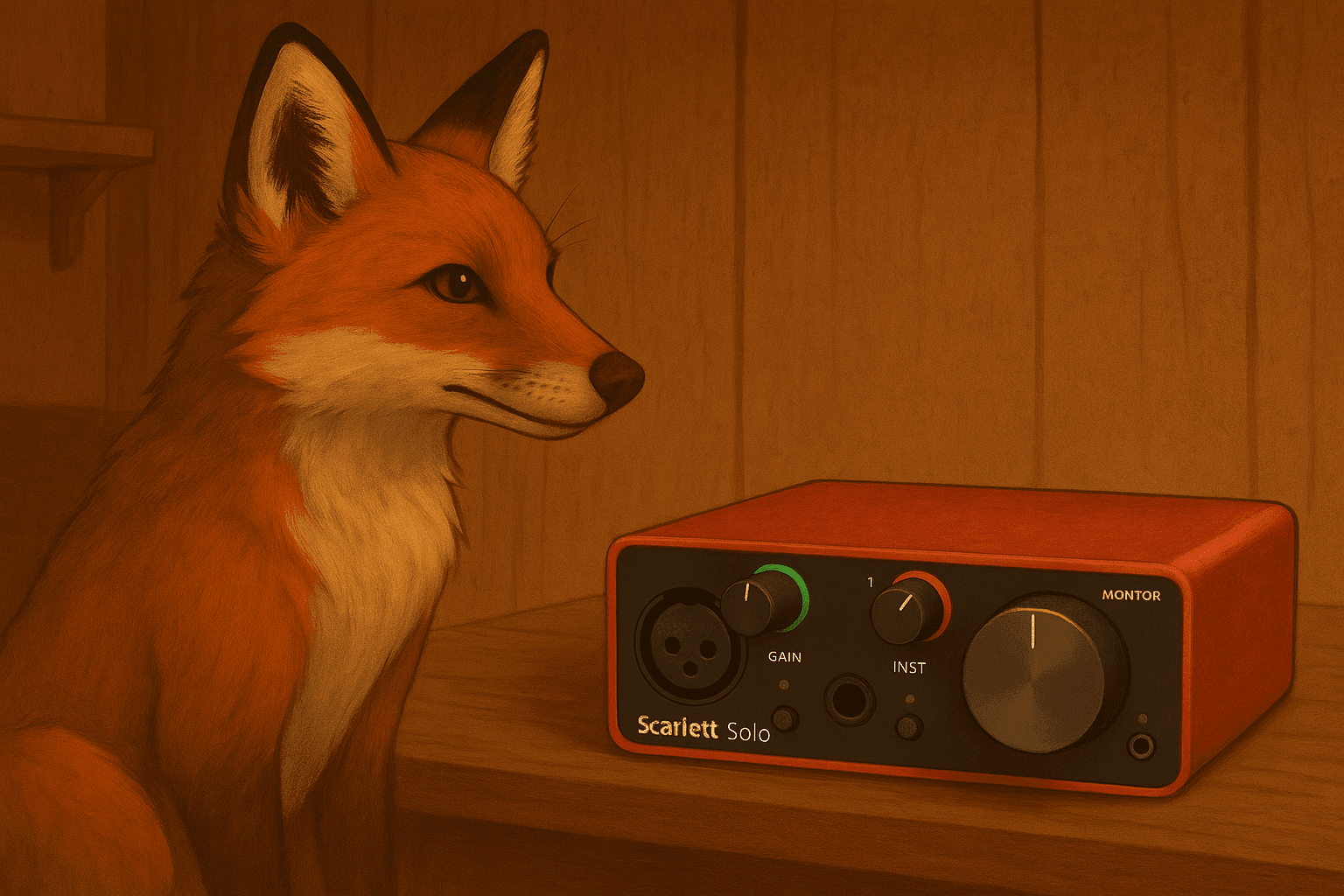I didn’t buy the Scarlett Solo because I needed it. I bought it because I heard it might finally understand me. My old audio setup—some rudimentary DAC tethered to the motherboard’s clumsy whispers—was functional, but uninspired. Then came this crimson brick of possibility. Sleek, silent, and distinctly un-bearlike, the Solo didn’t promise magic. It promised control. That, for a creature like me, is far more intoxicating.
Out of the box, the Scarlett felt like a ritual: USB cable coiled neatly like a secret handshake; that gently weighted knob daring me to turn it. I connected my headphones, then my nearfields. No drivers needed on Windows 11, but I grabbed Focusrite Control anyway—because I’m the kind of Fox who likes to know where the signal’s going, even when it’s not making a sound. The setup felt seamless, but not oversimplified. Clean signal routing, low latency, minimal fuss. It respected my time.
What struck me first wasn’t clarity—it was intentionality. Plugging in my condenser mic, I spoke. And the Solo responded not with flattery, but with honesty. No hiss, no haze. Just voice, undressed and unapologetic. The built-in mic preamp? Surprisingly solid. Plenty of clean gain, even without a Cloudlifter. I began re-recording all my voice notes and vinyl intro clips, because suddenly… I could trust what I heard.
The Direct Monitor button is a stroke of minimalist genius. I tap it, and suddenly I’m inside the moment—zero-latency monitoring without any digital detour. This isn’t about creating music for the masses. It’s about hearing yourself without delay, judgment, or disguise. I even found myself mixing with more confidence, trusting that what came out of those RCA outputs was the honest truth.
The Fox in me appreciates that the Solo doesn’t try to be more than it is. There’s no MIDI in/out, no ADAT expansion, no bloated software suite forcing its way into my creative space. Just one mic in, one instrument in, and two outs. Perfect. Limitations like these aren’t cages—they’re creative boundaries. You work with intention, not indecision.
And yet, it pairs beautifully with everything else in my den. My dynamic mic, my bookshelf monitors, even the vinyl-rip setup I’ve been quietly building out. The headphone amp holds its own too—not audiophile-tier, but certainly not lazy. There’s a warmth to it, like it knows I’ll be listening late into the night. Like it’s okay to be both meticulous and sentimental about sound.
If you’re like me—a detail-obsessed tinkerer with a fondness for tangible tools—the Scarlett Solo doesn’t just earn a place on your desk. It earns your trust. It doesn’t make me a better artist, just a clearer one. And that’s worth every rupee and rustle of leaves it took to bring it home.
- 2 high-headroom inputs for versatile recording options
- Supports 24-bit/192kHz recording for studio-quality sound
- 2 low-noise outputs for clear audio playback
- Comes with Pro Tools Intro+ for enhanced production capabilities
- Part Number: MOSC0024, Model: AMS-SCARLETT-SOLO-3G
- Includes a 2-year warranty for peace of mind
- Attractive red color design
- Sold as a single unit (Pack of 1)
More Than a Story: The Official Guide
If you’re looking for specs, setup steps, or those fine print features the Fox might’ve skipped, the full Scarlett Solo 3rd Gen user manual (v2.0) can be found here:
Scarlett Solo 3rd Gen User Guide V2.0 – PDF





